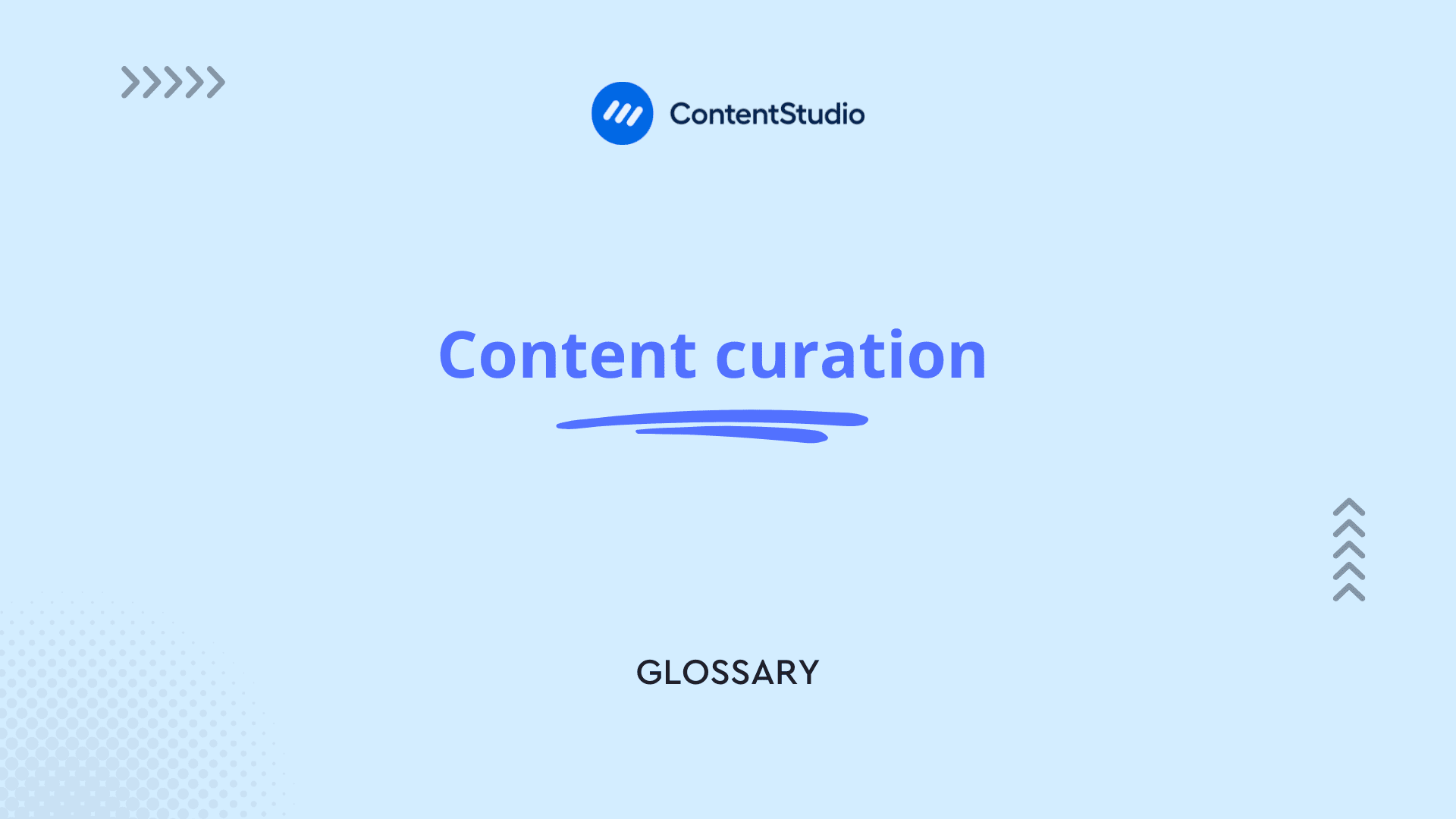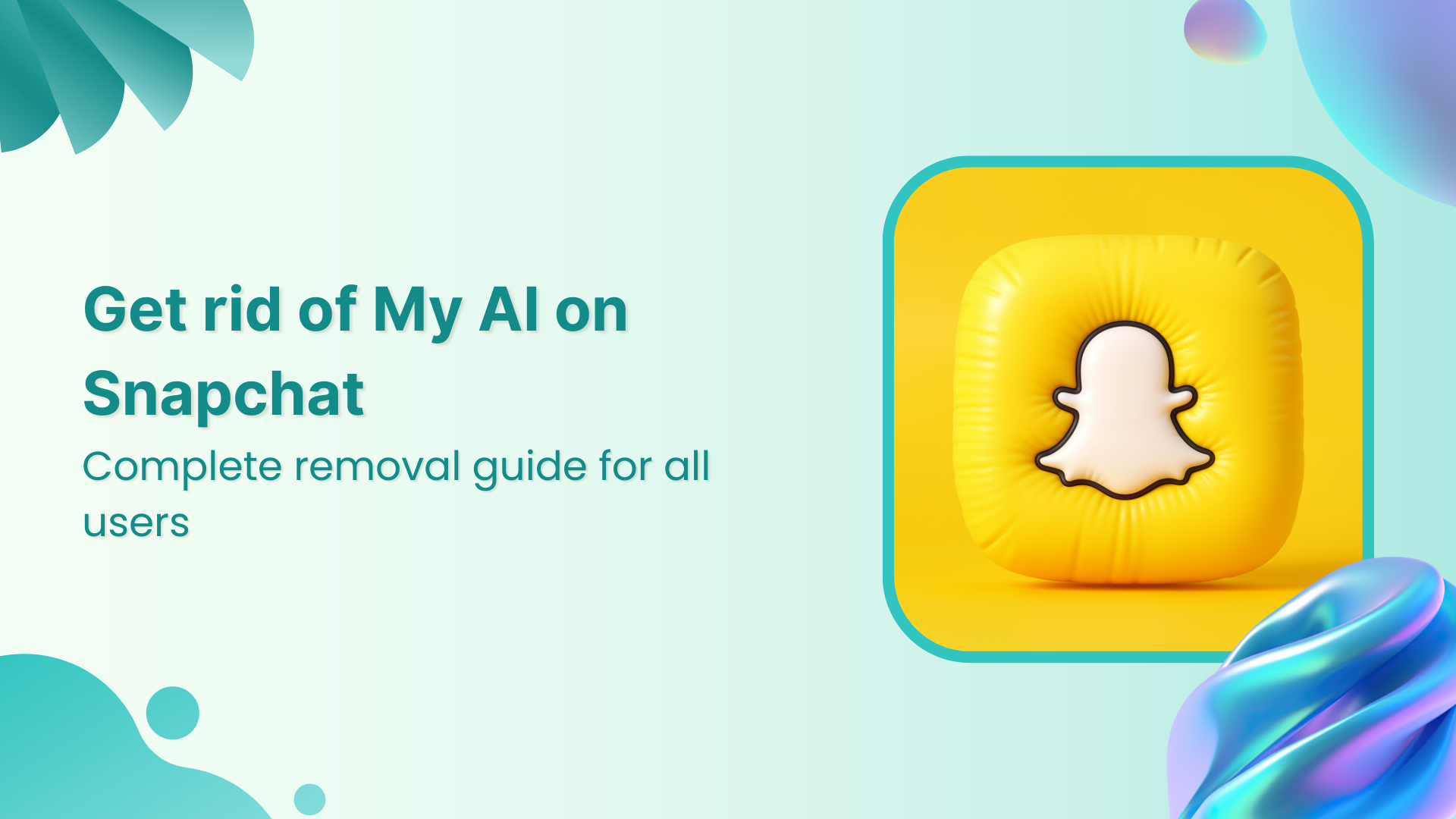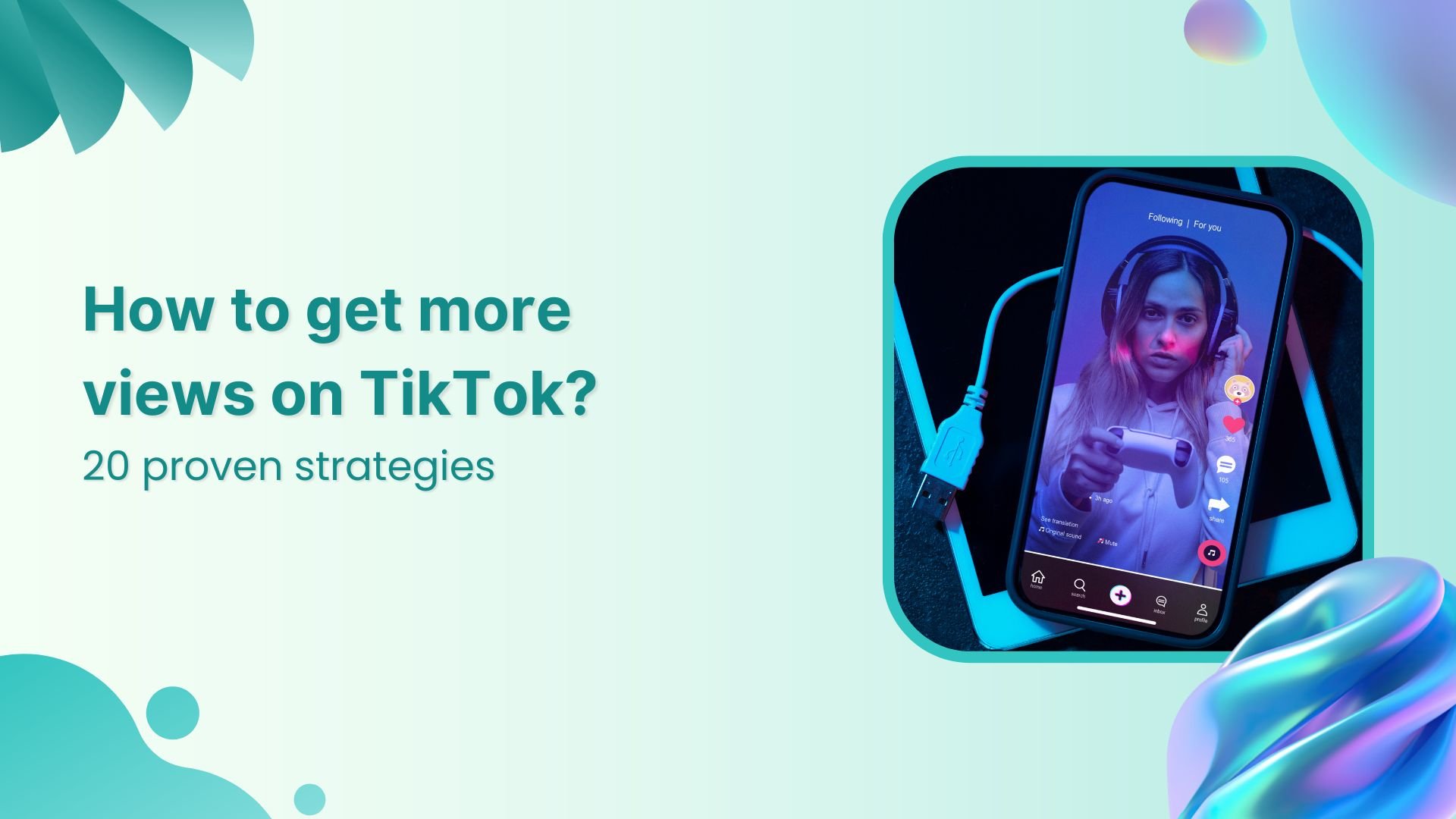Bulk-generate & schedule posts in seconds with Smart Scheduling. Try now!
Content curation

What is content curation?
Content curation is the strategic process of discovering, collecting, organizing, and sharing valuable and relatable content from various sources to provide added value to your target audience. Unlike content creation, curation focuses on selecting and contextualizing existing content while adding your unique insights and perspective to make it more relevant and meaningful for your audience.
In today's digital landscape where information overload is common, content curation helps cement brand authority by positioning you as a trusted source of curated knowledge in your industry. It's an essential component of a well-rounded content marketing strategy that can help businesses maintain consistent engagement without solely relying on original content creation.
Key components of content curation
1. Content discovery and selection
- Identifying high-quality, relevant content from reputable sources
- Evaluating content based on audience interests and needs
- Ensuring content aligns with your brand voice and values
2. Organization and categorization
- Systematically arranging curated content by topics, themes, or formats
- Creating a content library for easy access and reference
- Maintaining consistency in content organization
3. Value addition
- Adding expert insights and commentary
- Providing context relevant to your audience
- Highlighting key takeaways and practical applications
4. Distribution and sharing
- Choosing appropriate channels for content distribution
- Timing content sharing for maximum impact
- Maintaining a consistent sharing schedule
How to create an ideal content curation strategy?
1. Define your curation goals
The foundation of successful content curation begins with establishing clear, measurable objectives. Your content marketing strategy should aim to build thought leadership within your industry while simultaneously increasing brand awareness.
Focus on creating engagement that naturally leads to lead generation. Remember that content curation isn't just about sharing – it's about supporting your broader content marketing plan and establishing your brand as an authoritative voice in your niche.
2. Know your audience
Understanding your audience is the cornerstone of effective content curation. Begin by conducting thorough social media target audience research to identify their interests, pain points, and content preferences.
Monitor their social media engagement patterns to understand what resonates with them. This knowledge will help you curate content that not only captures attention but also provides genuine value. Pay special attention to their preferred content formats, whether they favor long-form articles, video content, or interactive media.
3. Choose your content sources
Diversifying your content sources is crucial for maintaining a fresh and engaging content stream. Utilize RSS feed readers and news aggregation apps to stay updated with industry publications and expert blogs.
Don't limit yourself to traditional sources – incorporate user-generated content and social media discussions to add authenticity to your curation efforts. When selecting sources, prioritize credibility and relevance to maintain your brand reputation while providing valuable insights to your audience.
4. Establish a content mix
Creating the right balance in your content mix is essential for maintaining audience interest and achieving your marketing goals. Aim for a strategic distribution of :
40% curated content, which provides valuable third-party perspectives
30% original content that showcases your expertise
20% engagement content that fosters community interaction
10% promotional content to support your business objectives.
This mix helps you maintain consistent social media engagement while building a strong content foundation.
5. Add value through contextualization
Transform curated content from simple sharing to valuable resources by adding your unique perspective and expertise. Write compelling introductions that capture attention and provide context for why the content matters to your audience.
Include expert commentary that bridges the gap between the original content and your audience's needs. Moreover, stay current by relating content to emerging content marketing trends and industry developments. Connect ideas across multiple sources to create comprehensive insights that demonstrate your thought leadership.
6. Implement a consistent schedule
Maintaining consistency in your content curation efforts is crucial for building audience trust and engagement. Utilize a comprehensive content calendar to plan and organize your curated content alongside your original content.
Leverage social media scheduling tools like ContentStudio to ensure regular content distribution across all platforms. Focus on implementing robust content distribution strategies and regularly monitor performance metrics to optimize your curation efforts. Use these insights to adjust your strategy and improve content relevance over time.
Top 5 content curation tools
1. ContentStudio
ContentStudio stands out as a comprehensive solution for modern content marketers. Along with numerous social media management features, ContentStudio also offers AI-powered content discovery that continuously scans and suggests relevant content based on your industry and audience preferences.
What truly sets ContentStudio apart is its unified approach to social media management – you can seamlessly schedule posts across Facebook, Instagram, LinkedIn, Twitter, Pinterest, and even TikTok directly from a single dashboard.
The platform's user-friendly post composer enables direct scheduling and posting to all major platforms, eliminating the need for manual posting or third-party apps. This is complemented by an AI writing assistant that helps enhance curated content with platform-specific captions and messaging.
The customizable topic feeds ensure you never run out of content ideas, while the social media analytics provide detailed insights into content performance across all platforms.
For agencies and teams managing multiple accounts, ContentStudio offers robust client management features and a sophisticated approval workflow system. The platform's content automation capabilities allow you to set up recurring schedules and automate content distribution, making it an invaluable tool for consistent content curation and distribution across all major social networks.
Key Features
- Discover relevant content instantly with AI-powered semantic search and automated custom topic feeds.
- Plan and schedule content effortlessly using our unified social media calendar with bulk scheduling support.
- Create engaging content faster with our AI writing assistant and AI caption generator.
- Publish directly to all major platforms – Instagram, Facebook, TikTok, and more.
- Track performance with comprehensive social media analytics and competitor analysis tools.
- Collaborate seamlessly using our approval workflow and centralized media library.
- Manage multiple clients efficiently with workspace tools and automated reporting capabilities.
- Monitor all social interactions through our unified social inbox.
- Amplify your content reach with smart repurposing tools and automated distribution.
- Measure campaign success with detailed ROI tracking across all platforms.
2. Feedly
Feedly has established itself as the premier RSS feed aggregator for professional content curators and marketing teams. By leveraging AI-powered research assistants and advanced content filtering, Feedly helps users cut through the noise to find the most relevant content in their industry. The platform excels at organizing large amounts of information from diverse sources into easily digestible feeds, making it an invaluable tool for staying current with industry news and trends.
Benefits:
- AI-powered content filtering
- Customizable news feeds
- Team collaboration features
- Advanced content organization
- Integration with major platforms
3. Pocket
As Mozilla's sophisticated content saving tool, Pocket goes beyond simple bookmarking to offer a comprehensive content curation and consumption experience. It's designed for professionals who need to save and organize content for later use, with powerful tagging and search capabilities that make it easy to build a personal content library.
Advantages:
- Distraction-free reading experience
- Cross-platform synchronization
- Smart content recommendations
- Powerful search and tagging
- Integrated with Mozilla Firefox
4. ChatGPT
ChatGPT brings AI-powered assistance to content curation through its advanced language processing capabilities. It excels at helping content curators analyze, summarize, and enhance their content selections.
The tool can help identify key themes, generate engaging descriptions, and create contextual introductions for curated content, making it an invaluable assistant for modern content curation workflows.
Features:
- Content summarization and analysis
- Engaging caption generation
- Trend identification and insights
- Multi-language content support
- Context-aware content suggestions
5. Claude
Claude represents the next evolution in AI-powered content assistance, offering sophisticated analysis and enhancement capabilities for content curation. Its strength lies in understanding context and nuance, helping curators add valuable insights to their selected content.
The platform excels at creating comprehensive content summaries, identifying key takeaways, and generating thoughtful analysis that adds value to curated content.
Capabilities:
- Deep content analysis
- Contextual insights generation
- Professional writing assistance
- Research and fact-checking support
- Content adaptation for different platforms
Leveraging AI for content curation
ContentStudio's AI capabilities enhance content curation through:
AI content discovery
- Automated content suggestions based on relevance
- Smart filtering of high-quality sources
- Trend detection and analysis
- Real-time content recommendations
AI writing assistance
- Enhancement of curated content
- Caption generation for social media
- Content summarization
- SEO optimization suggestions
Best practices and success metrics for content curation
Content curation success relies on both maintaining impeccable standards and measuring impact through clear metrics. While high-quality curation builds trust and engagement, effective measurement ensures your efforts align with business objectives.
By combining strategic best practices with robust performance tracking, you can create a data-driven curation strategy that delivers measurable results while maintaining editorial excellence:
- Verify source credibility meticulously and implement rigorous fact-checking processes.
- Practice ethical content sharing by properly crediting sources and respecting content attribution guidelines.
- Monitor engagement metrics, including likes, shares, comments, and time spent on content.
- Track click-through rates and bounce rates to assess content relevance and impact.
- Measure social media reach through follower growth, engagement rates, and audience expansion.
- Analyze community engagement patterns across different content types and platforms.
- Keep close watch on brand mentions and sentiment in social discussions.
- Identify peak engagement times through social media analytics for optimal content scheduling.
- Review website traffic patterns and conversion rates from curated content.
- Use content insights to determine which topics and formats perform best.
- Track newsletter subscription growth and email engagement metrics.
- Implement comprehensive social media monitoring for brand awareness tracking.
- Measure audience retention and content longevity through performance metrics.
- Monitor lead generation from curated content initiatives.
- Conduct regular competitor analysis to benchmark your curation performance.
- Assess content distribution effectiveness across channels.
- Calculate marketing ROI from your curation efforts.
- Track community building metrics like comment quality and discussion depth.
- Monitor content freshness and update frequency to maintain relevance.
- Analyze audience demographic changes and engagement patterns.
- Evaluate content mix effectiveness through performance comparisons.
- Track social sharing patterns and viral potential of curated content.
Common content curation challenges and solutions
1. Time management
Challenge: Content curation can be time-consuming
Solution: Use social media automation tools and scheduling features
2. Content relevance
Challenge: Maintaining consistent quality and relevance
Solution: Develop clear content guidelines and use AI-powered content discovery
3. Audience engagement
Challenge: Keeping audience interested
Solution: Mix content formats and implement engagement strategies
4. Content organization
Challenge: Managing large amounts of content
Solution: Implement systematic categorization and use content management tools
Future trends in content curation
The landscape of content curation is rapidly evolving, driven by advances in artificial intelligence and changing user consumption patterns. As AI technology transforms content marketing, curators are gaining access to increasingly sophisticated tools for content discovery, analysis, and distribution.
The future promises more intelligent, automated, and personalized curation solutions while maintaining the crucial human element of strategic content selection.
- AI-powered content discovery will become more sophisticated at predicting audience preferences and trending topics.
- Personalization at scale will enable curators to deliver tailored content experiences to different audience segments.
- Video content curation will gain prominence as short-form video continues to dominate social media.
- Interactive content formats will emerge as key tools for increasing audience engagement.
- Real-time content curation will become essential for staying relevant in fast-moving digital conversations.
- Cross-platform content optimization will be automated through AI-driven tools.
- Community-driven curation will rise as audiences seek more authentic and collaborative experiences.
- Analytics-driven content selection will become more predictive rather than reactive.
- Voice-optimized content curation will grow with the increasing use of voice search and audio platforms.
Conclusion
Content curation is an essential strategy for modern digital marketing, helping businesses provide value while building authority in their industry.
By following best practices, using the right tools, and leveraging AI capabilities, organizations can create an effective content curation strategy that engages their audience and achieves their marketing goals.
Remember to stay updated with content marketing trends and continuously refine your curation strategy based on performance metrics and audience feedback. The future of content curation lies in the smart integration of AI-powered tools like ContentStudio with human expertise to deliver the most relevant and valuable content to your audience.

Create, plan, schedule, and publish posts on all social media networks
Recommended for you


Powerful social media management software
14-day free trial - No credit card required.


